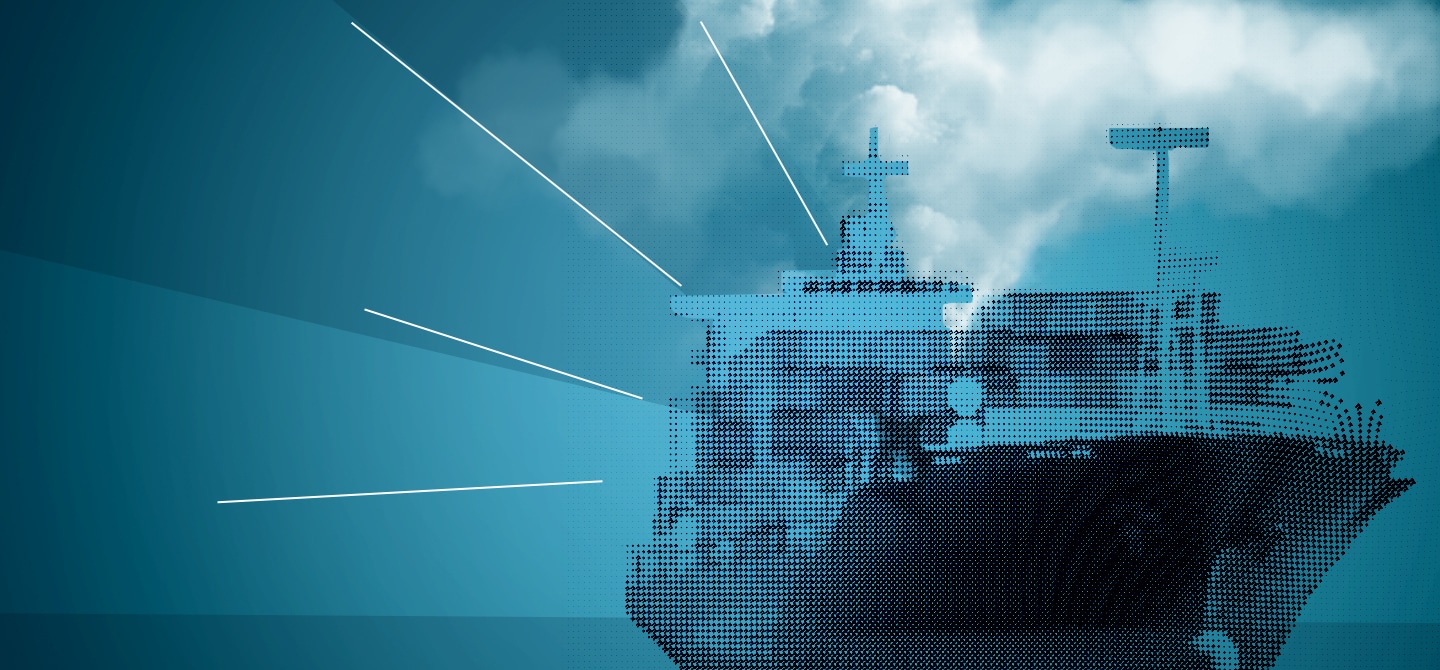Between 2012 and 2018, the International Maritime Organisation1 noted a significant shift in the energy mix of carriers towards liquefied natural gas (LNG) and methanol. What are your thoughts on that?
Today the sector’s energy mix is still 99% fossil fuel based. It is difficult to measure a trend in greenhouse gas (GHG) emissions because of the disruption caused by the Covid-19 crisis. Nevertheless, a transition to LNG is observed, we estimate in 2020 that it represents 6% of the fuel used for European maritime transport, and that this share could rise to almost 25% by 2030. The transition is negative for two reasons. First, it is a fossil fuel. Second, 80% of LNG is currently consumed by ships whose engines release about 3% of methane – a powerful GHG – into the atmosphere. The carbon footprint is therefore higher over the life cycle than conventional fuels 2.
Some large shipowners such as Maersk are moving towards methanol. Most methanol is currently produced from fossil resources. However, it is possible to synthesise it from renewable hydrogen… It is necessary to impose regulatory constraints on the origin of fuels. This is currently being discussed at European level, by the Member States and the European Parliament.
Does the renewable origin of a fuel always make it virtuous?
We must pay attention to this factor, but also to conflicts of use. For example, the production of biofuels must not compete with food production or lead to changes in land use. Only biofuels produced from waste are virtuous. The availability of the resource is another very important consideration. Many sectors, notably aviation, will need 2nd and 3rd generation biofuels to lower carbon footprint. We have estimated that the transformation of all agricultural residues would only cover a little more than 10% of aviation’s needs in 2050. We do not believe that the use of biofuels is relevant for the shipping sector.
What is the ideal fuel to decarbonise shipping?
Two thirds of current GHG emissions could be avoided with a renewable energy mix3. Availability for large-scale deployment must also be considered. For small river vessels, electric propulsion is interesting and already used. However, the capacity of the batteries does not allow to power large vessels today. For them, hydrogen-based fuels of renewable origin are the most suitable.
For short to medium distances, hydrogen can be used directly in a fuel cell or combustion engine. For long distances, the space needed to store large quantities of hydrogen is a limitation. Electrofuels (see box) are the best alternative. I am thinking, for example, of e‑methanol or e‑ammonia, produced from hydrogen of renewable origin. The potential for reducing GHG emissions using these solutions is estimated at over 70%, or even 100% in the case of e‑ammonia.
Electrofuels
E‑fuels refer to all hydrogen-based fuels, usually in liquid form for marine use. In addition to hydrogen itself, e‑fuels include e‑ammonia, made from hydrogen and nitrogen. Synthetic fuels, such as e‑methanol, e‑methane, and e‑diesel, are made from hydrogen (H2) and carbon dioxide (CO2). Hydrogen can be produced by electrolysis of water and then combined with CO2 in a thermocatalytic reactor to produce the fuel. CO2 can be captured from the atmosphere, or from biological sources such as agricultural and household waste. Their carbon footprint can be much less attractive if the carbon and hydrogen are of fossil origin: the life-cycle carbon footprint then becomes greater than conventional fuels.
The main limitation at present is their price. All renewable hydrogen fuels are very expensive. E‑ammonia, the cheapest of them, is about 4 times more expensive than biofuels 4. Of course, wider adoption will bring economies of scale. But their price will inevitably remain higher than that of fuel oils.
Is it already possible to use synthetic fuels in merchant ships?
The technology is mature, but it is aimed more at renewing the maritime fleet: a design and engines adapted to e‑fuels are needed for efficient ship operation. About a third of the European fleet is at the end of its life, so the solution is relevant. The first engines using ammonia are expected to be marketed by the German company MAN ES by 2024. Wärtsilä, another manufacturer, is also preparing ammonia-methanol engines. Asian shipyards have announced the first commissioning of ammonia container ships in 2025.
The main limitation, beyond the cost of these e‑fuels, is the deployment of the whole sector. In Denmark and Norway, projects for the production and use of renewable e‑methanol, hydrogen and e‑ammonia are being set up: the challenge remains to produce enough renewable hydrogen. The EU’s targets have just been increased due to the crisis in Ukraine, and now aim to produce over 20 million tonnes of hydrogen by 2030. There is also a need to develop the infrastructure to supply ships, especially as conversion possibilities are limited. For example, ammonia is toxic and corrosive and requires dedicated storage facilities. This does not apply to e‑diesel, which has the advantage of working with existing ships and infrastructure. But the extremely high cost, much higher than e‑ammonia, may make its large-scale use prohibitive.
Legislation currently favours the deployment of LNG infrastructure: we believe it is more appropriate to encourage the deployment of dedicated hydrogen and ammonia refuelling infrastructure and to introduce minimum targets for the use of e‑fuels by ships.








